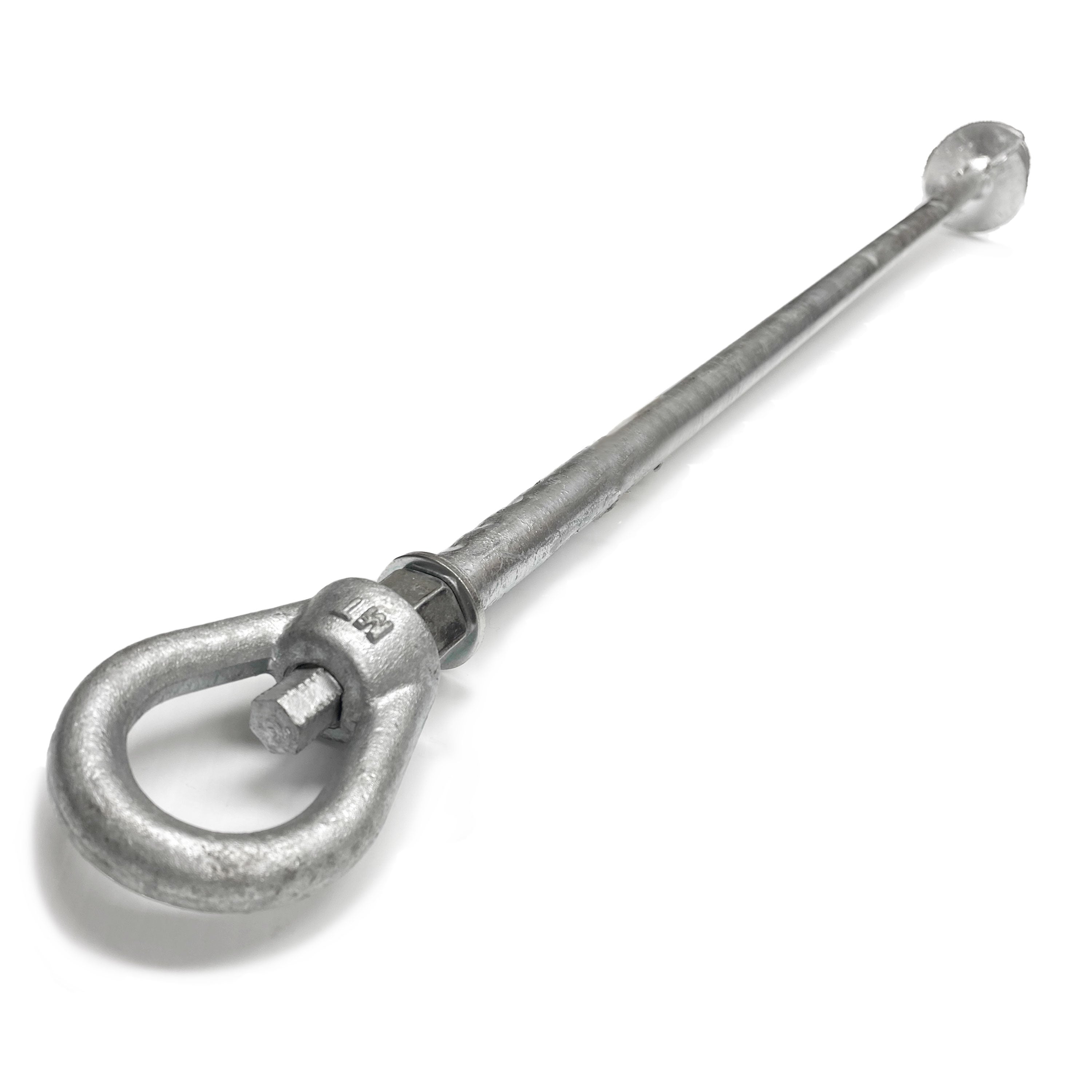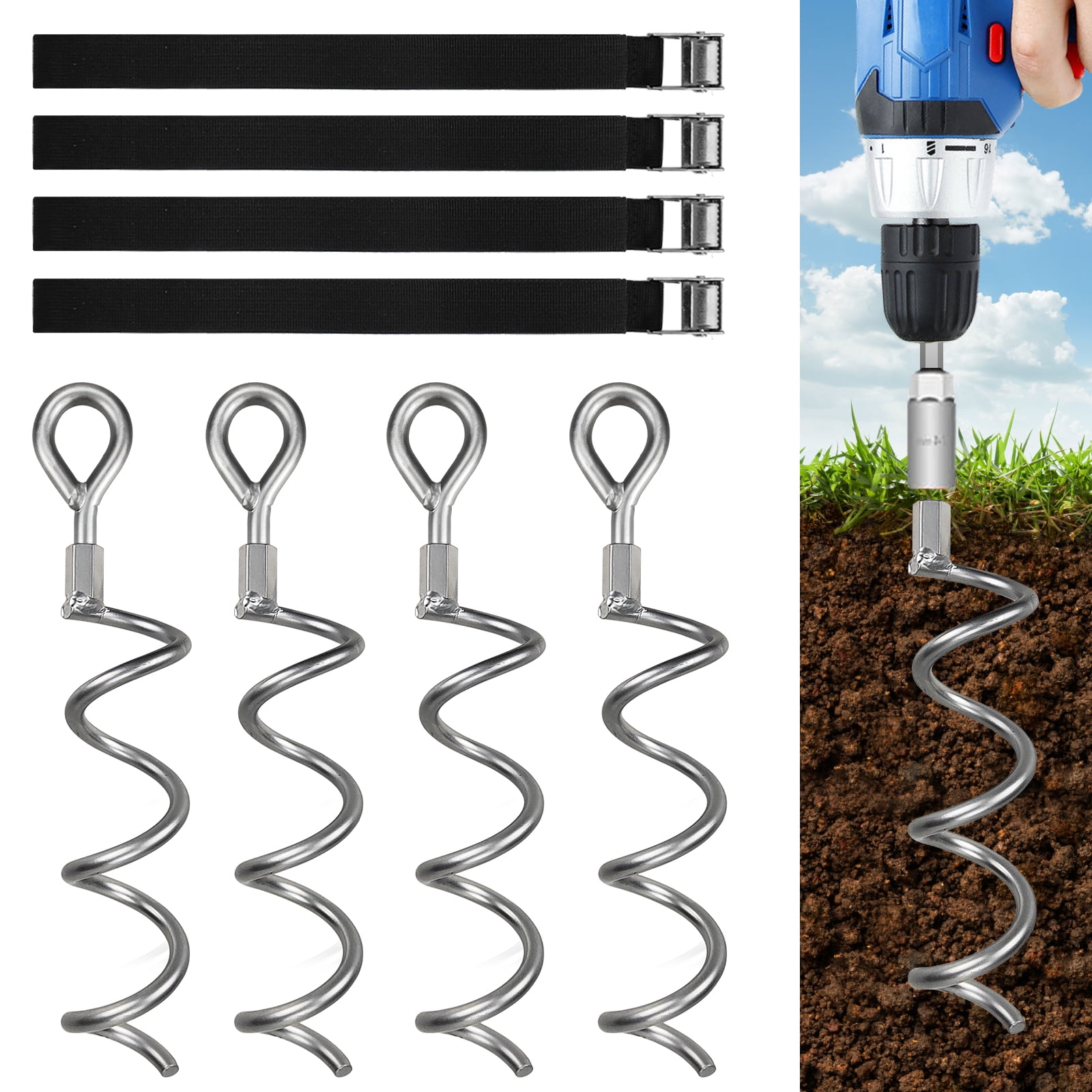Advantages of a High-Quality Ground Anchor for Better Security
Advantages of a High-Quality Ground Anchor for Better Security
Blog Article
Discover the Various Kinds Of Ground Support for Your Next Task
From auger supports, which excel in varied dirt problems, to stake supports created for short-term installments, the alternatives are numerous. In addition, concrete and screw supports existing distinct advantages in specific situations, while deadman supports are customized for applications calling for resistance to side pressures.

Auger Anchors
Auger supports are a popular option in numerous building and landscaping tasks due to their special layout and efficient anchoring capabilities. These anchors include a helical screw-like shaft that is driven right into the ground, permitting for a secure and steady hold. The spiral layout helps with easy installment and makes the most of resistance versus side pressures, making auger anchors specifically efficient in applications such as secure fencing, temporary frameworks, and disintegration control.
The setup procedure of auger anchors is fairly uncomplicated. Auger anchors can be quickly gotten rid of and recycled, which includes to their cost-effectiveness and sustainability.
Among the considerable advantages of auger supports is their ability to disperse tons evenly across the surrounding dirt, lowering the threat of dirt disturbance and minimizing environmental impact. Additionally, they are less prone to loosening up or heaving over time contrasted to typical securing techniques. Auger supports are an excellent selection for tasks needing trusted and durable anchoring solutions.

Risk Anchors
When it involves securing structures in a range of outdoor applications, risk anchors offer a simple and trusted remedy. These supports are generally built from durable materials such as steel or aluminum, made to stand up to ecological anxieties while supplying optimal security. Their easy design enables quick setup, making them an excellent choice for short-lived or permanent anchoring demands.
Stake supports are specifically valuable in safeguarding camping tents, covers, and other light-weight structures against wind and weather. They function by being driven into the ground at an angle, producing a solid hold that resists pull-out pressures - Ground Anchor. The efficiency of risk supports depends upon numerous factors, including dirt type, moisture content, and the angle of setup
For added safety, several stake supports include attachment points for ropes or bands, permitting tension adjustments as required. In applications such as landscaping or building, they can effectively support devices or frameworks on unequal surface. Overall, stake anchors give a affordable and versatile service for securing different outdoor installations, making them a preferred choice for contractors and do it yourself fanatics alike.
Concrete Anchors
Concrete supports provide a durable remedy for protecting frameworks to concrete surfaces, guaranteeing security and safety and security in different applications. These supports are important for jobs varying from domestic buildings to massive industrial installations. They can be found in various kinds, including growth supports, glue supports, and undercut supports, each designed for details tons demands and ecological problems.
Adhesive supports utilize high-strength epoxy or resin to bond the anchor to the concrete, offering superior load-bearing capacities, specifically in split concrete situations. Undercut supports produce an one-of-a-kind shape within the concrete, giving outstanding holding power, particularly in applications where tensile tons are prevalent.
When implemented useful site appropriately, concrete anchors dramatically improve the architectural honesty of various tasks, making them crucial in modern building practices. Understanding the certain needs of your project will certainly help in picking the appropriate kind of concrete anchor for the job.
Screw Anchors

Screw anchors are a functional attaching remedy that can be successfully employed in a selection of applications where standard concrete supports might not be adequate. These anchors include a helical design that enables them to be quickly driven into the ground, making them excellent navigate to this website for use in dirt and other substratums. Their unique structure gives outstanding holding power and resistance to pull-out forces, making them ideal for numerous tasks, from landscape design to architectural assistance.
Among the primary advantages of screw supports is their ease of setup. They require very little tools and can usually be mounted without the demand for excavation, which saves both time and labor costs. Furthermore, screw supports can be eliminated and recycled, offering a lasting service for short-term applications.
Screw anchors are especially useful in areas where soil problems are testing, such as loosened or sandy soils. Their capability to be mounted at varying depths allows for modification based on certain project requirements. Generally, screw supports provide a reliable and effective securing approach, making them an outstanding choice for engineers and service providers seeking effective services for their jobs.
Deadman Anchors
Deadman anchors work as a robust remedy for maintaining structures in tough problems, especially where conventional securing approaches may fail. These anchors include huge, hefty things hidden underground, which create resistance versus side pressures. The design usually entails a horizontal element, such as a block of concrete or a steel plate, hidden in the dirt, news to which bands or cable televisions are affixed.
The efficiency of deadman supports depends on their ability to distribute loads over a bigger location, reducing the danger of failure in unpredictable soil conditions. They are especially valuable in applications such as maintaining walls, short-term structures, and incline stablizing, where dirt activity can jeopardize the honesty of the structure.
Installment of deadman anchors calls for mindful preparation to ensure they are put at the right depth and orientation, maximizing their load-bearing ability. While they may require even more labor and product than light-weight supports, their dependability in adverse problems makes them important for long-lasting jobs. Deadman anchors are versatile and can be adapted to numerous applications, making them a best option for designers encountering special difficulties in their projects.
Conclusion
Auger anchors excel in varied soil problems, while stake anchors fit short-term applications. For concrete surface areas, growth and adhesive supports supply trusted choices, and screw anchors provide versatility in difficult surfaces.
In addition, concrete and screw supports present special advantages in specific situations, while deadman anchors are customized for applications calling for resistance to lateral pressures - Ground Anchor.Auger anchors are a prominent choice in various building and construction and landscape design tasks due to their special style and reliable anchoring capabilities. They come in different types, including expansion supports, sticky supports, and undercut supports, each made for details tons requirements and ecological conditions
Sticky supports make use of high-strength epoxy or resin to bond the anchor to the concrete, supplying remarkable load-bearing abilities, particularly in broken concrete scenarios. In general, screw anchors provide a trustworthy and effective securing approach, making them an excellent option for contractors and designers seeking reliable remedies for their tasks.
Report this page